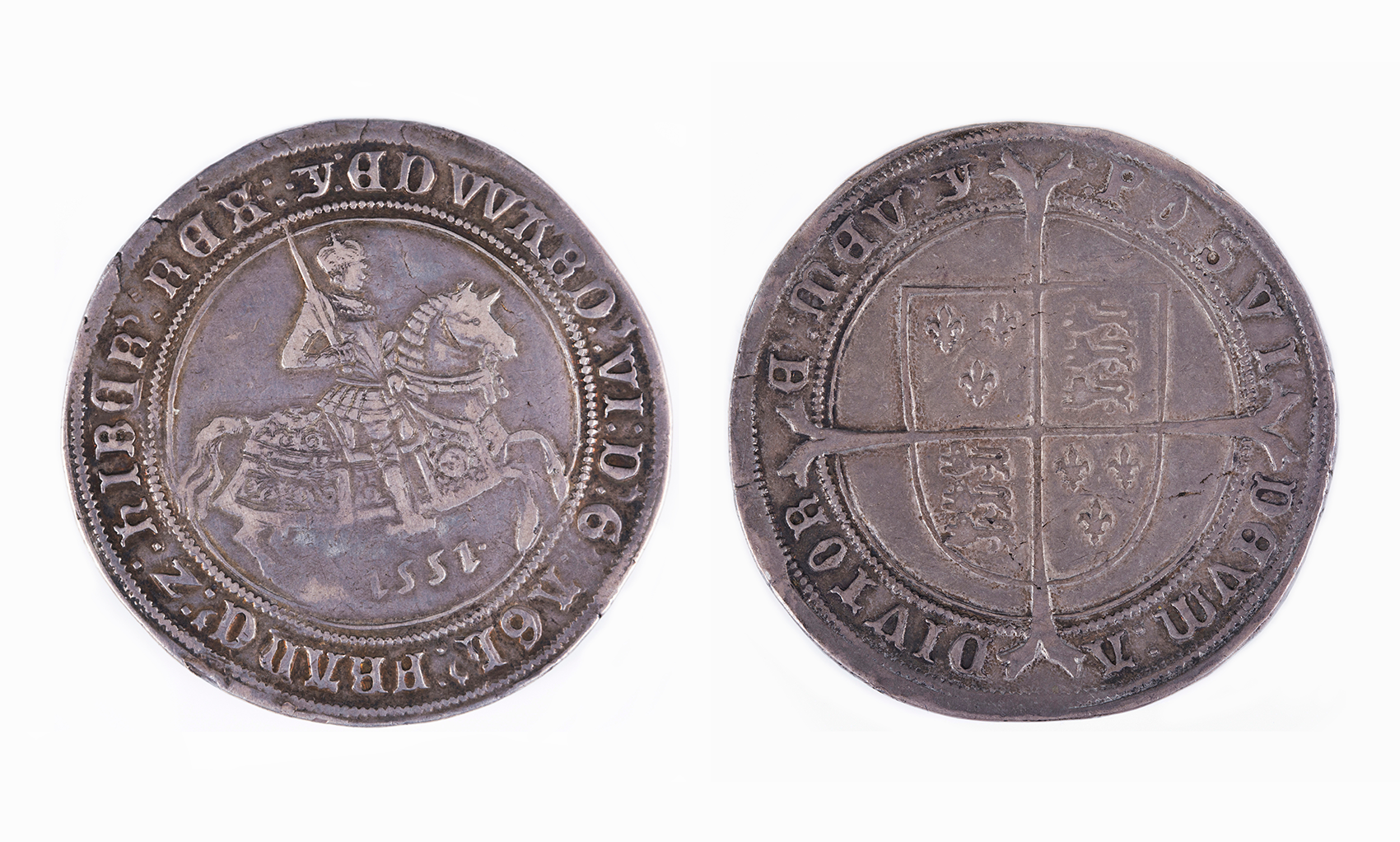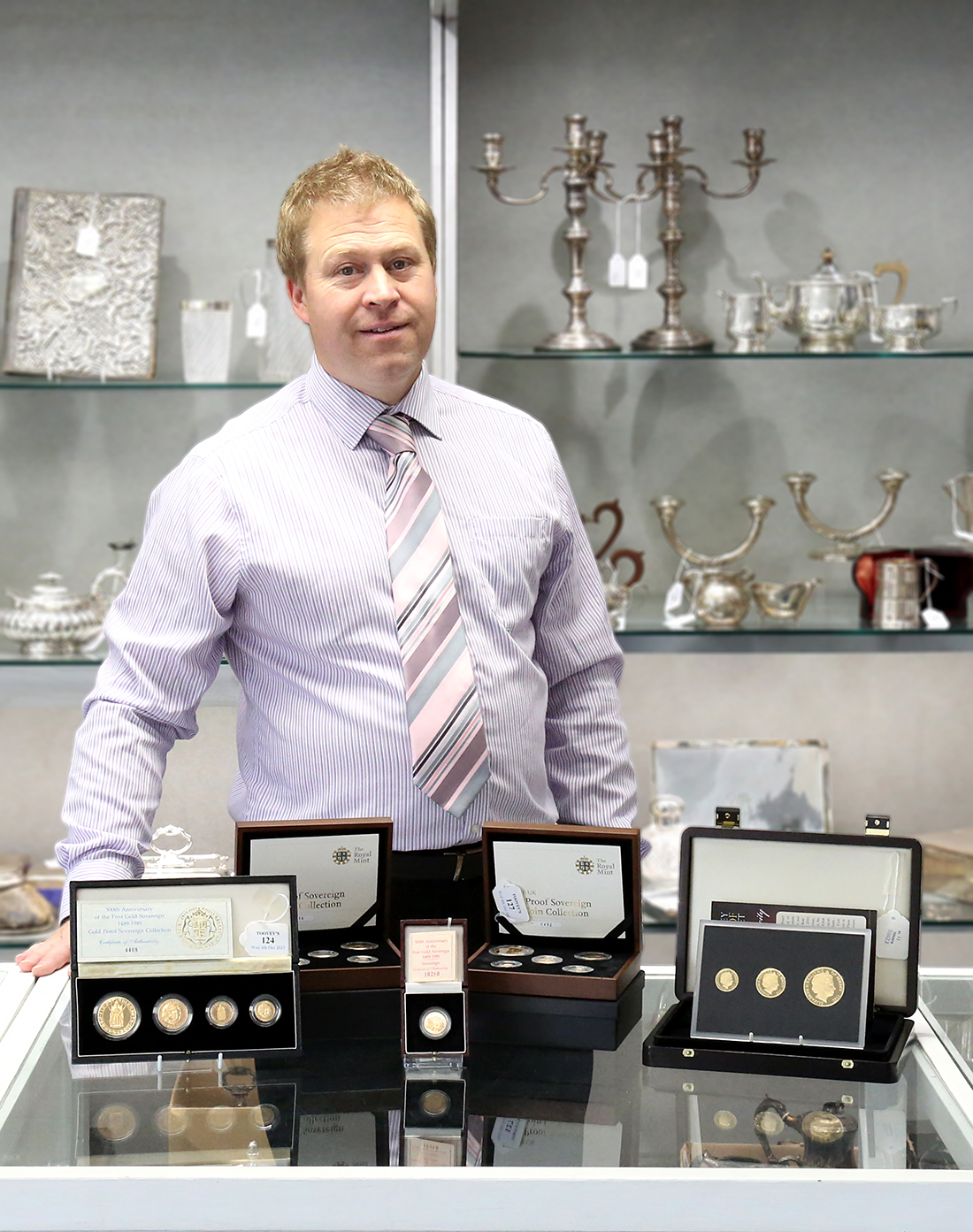
This week I am in the company of Toovey’s coin specialist, Mark Stonard, who is celebrating the sale of the remarkable Robert Pearce of Normanton Hall, Normanton-on-Trent, Nottinghamshire collection of coins and medallions.
I ask Mark about the late Robert Pearce’s collection. He says “It was a carefully curated collection started in the 1940s. It comprised largely of English Crowns from Edward VI in 1551 to Elizabeth II in 1977. The Edward VI crown from 1551 depicts the boy king on horseback. It had a typically Tudor look to it. It was a third period Crown and a fine issue mint-marked Y. On the reverse you see a shield on a cross. It was fascinating to see its provenance with the original approval invoice from B.A. Seaby Ltd, dated 6th March 1946 for £9. It realised £1500.”
“Alongside the coins was a pretty comprehensive collection of wonderful 17th and 18th century medals and medallions. Most of them celebrated or commemorated points of British history from the turbulent 17th century including the repercussions of the English Civil War and Commonwealth. The story of the medals included a Charles I cast and chased silver royalist badge by Thomas Rawlins. These were usually given to officers in the King’s army and also others who helped the King and Queen. It made £1300.”

Mark continues “What was remarkable was the way Robert put together the collection of coins and medals just after the Second World War – another time of great uncertainty in the history of our nation. He had a great eye and bought a number of big and impressive things. He curated them carefully laying them out in his multi-drawer coin collectors’ cabinet. They provided a remarkable window into 17th century England. Among the medals were examples by some of England’s finest engravers and medallists including Thomas Simon, Thomas Rawlins and John Roettiers.” Mark explains how Thomas Simon’s career spanned the Commonwealth and the restoration of Charles II. Thomas Rawlins was a playwright and medallist. The Roettiers were a family of celebrated engravers and medallists. John was the most significant of the Roettiers engravers and would become Chief Engraver of the Royal Mint in 1670. Mark adds “All these men were born into the 17th century world of the English Civil War but found a path to create beautiful objects. Objects which still delight collectors today.”
Mark Stonard is always happy to share his passion for this specialist field with collectors at Toovey’s.

